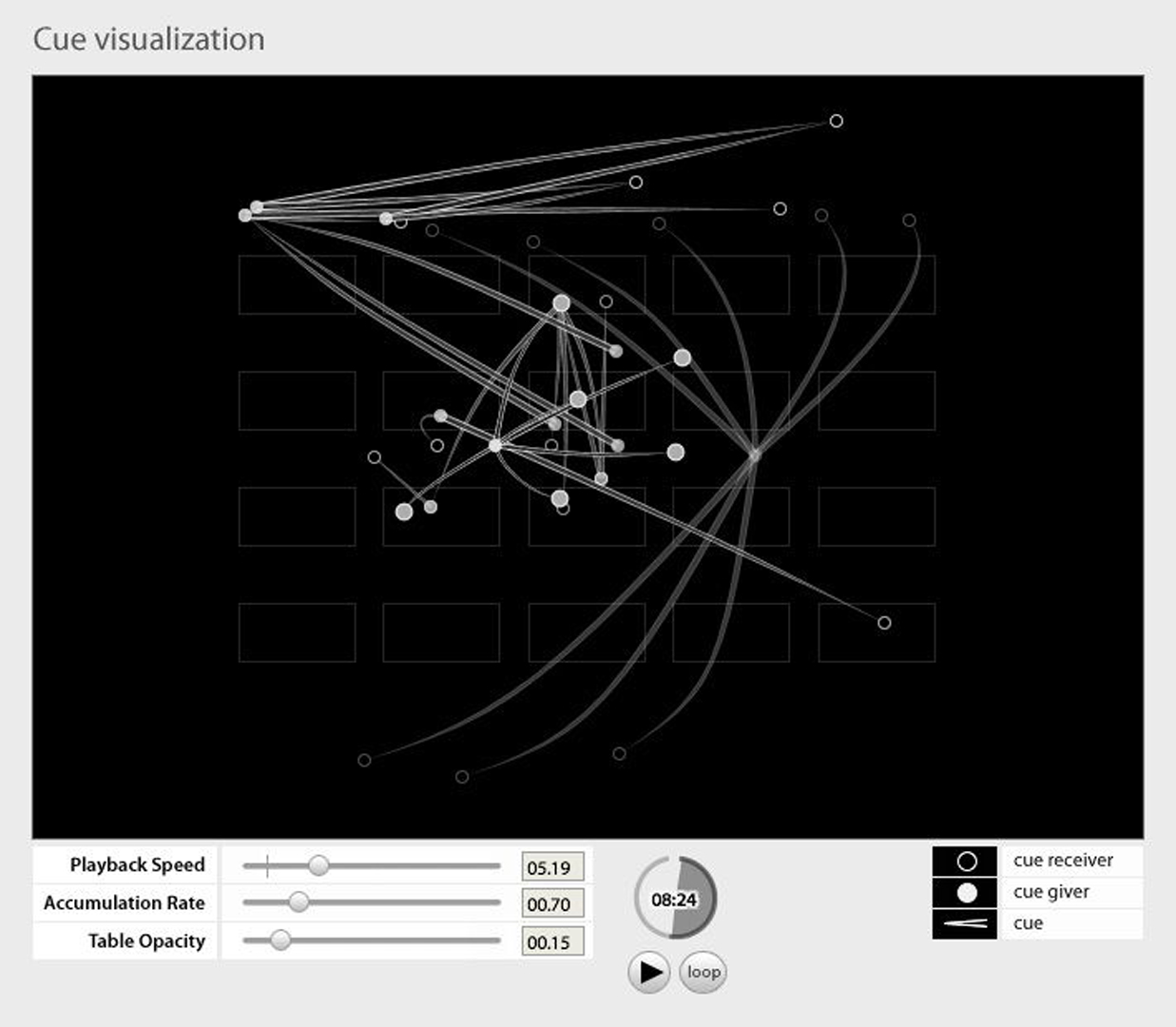Maria Palazzi, Norah Zuniga Shaw, William Forsythe: Synchronous Objects for One Flat Thing, reproduced
Artist(s):
Collaborators:
- Alva Noe
-
- University of California, Berkeley
- Andrew Calhoun
-
- The Ohio State University
- Anna Reed
-
- The Ohio State University
- Ashley Thorndike
-
- The Ohio State University
- Benjamin Schroeder
-
- The Ohio State University
- Matthew Lewis
-
- The Ohio State University
- Beth Albright
-
- The Ohio State University
- Michael Andereck
-
- The Ohio State University
- Sucheta Bhatawadekar
-
- The Ohio State University
- Hyowon Ban
-
- The Ohio State University
- Jane Drozd
-
- The Ohio State University
- Joshua Fry
-
- The Ohio State University
- Melissa Quintaniha
-
- The Ohio State University
- Lily Skove
-
- The Ohio State University
- Mary Twohig
-
- The Ohio State University
- Ola Ahlqvist
-
- The Ohio State University
- Peter Chan
-
- The Ohio State University
- Noel Cressie
-
- The Ohio State University
- Stephen Turk
-
- The Ohio State University
- Jill Johnson
- Christopher Roman
- Elizabeth Waterhouse
- Scott deLahunta
-
- Amsterdam School of the Arts
- Patrick Haggard
-
- University College London
Title:
- Synchronous Objects for One Flat Thing, reproduced
Exhibition:
Creation Year:
- 2009
Category:
Artist Statement:
Synchronous Objects for One Flat Thing, reproduced is an interactive screen-based work developed by The Ohio State University’s Advanced Computing Center for the Arts and Design and the Department of Dance in collaboration with renowned choreographer William Forsythe. Pivoting on Forsythe’s masterwork of visual complexity, One Flat Thing, reproduced (OFTr), the Synchronous Objects project seeks to enrich cross-disciplinary investigation and creativity by revealing deep structures of choreographic thinking through a vivid collection of information objects in the form of 3D computer animation, annotation, and interactive graphics.
Though dance is notoriously difficult to capture and document, Forsythe challenged our research group to develop a new kind of generative dance “literature” to stimulate the exchange of ideas and innovation in a wide range of disciplines. His choreography in OFTr is particularly exciting to analyze, due to the challenges it poses for visualizing a high density of interdependent relationships distributed across a network of 17 dancers navigating a landscape of a 20-table grid and resulting in a contrapuntal dance composition.
Co-creative directors Maria Palazzi and Norah Zuniga Shaw gathered a multidisciplinary team of researchers from architecture, cognitive science, computer science, dance, design, geography, philosophy, and statistics to apply and cross-pollinate their disciplinary visualization methodologies in examining Forsythe’s strategies. The research involved extensive work with The Forsythe Company to systematically analyze the material and systems of exchange that make up OFTr. As we parsed the dance into its hundreds of component parts, we were challenged to determine means of quantifying these data, using them to drive concrete and abstract interpretations, transformations, derivations, and interactive creative tools.
This work underscores the profound possibilities in collaborations between major artists and interdisciplinary research teams using innovative and interpretive information-visualization methods in making meaningful visual literatures that have relevance in contemporary society.





